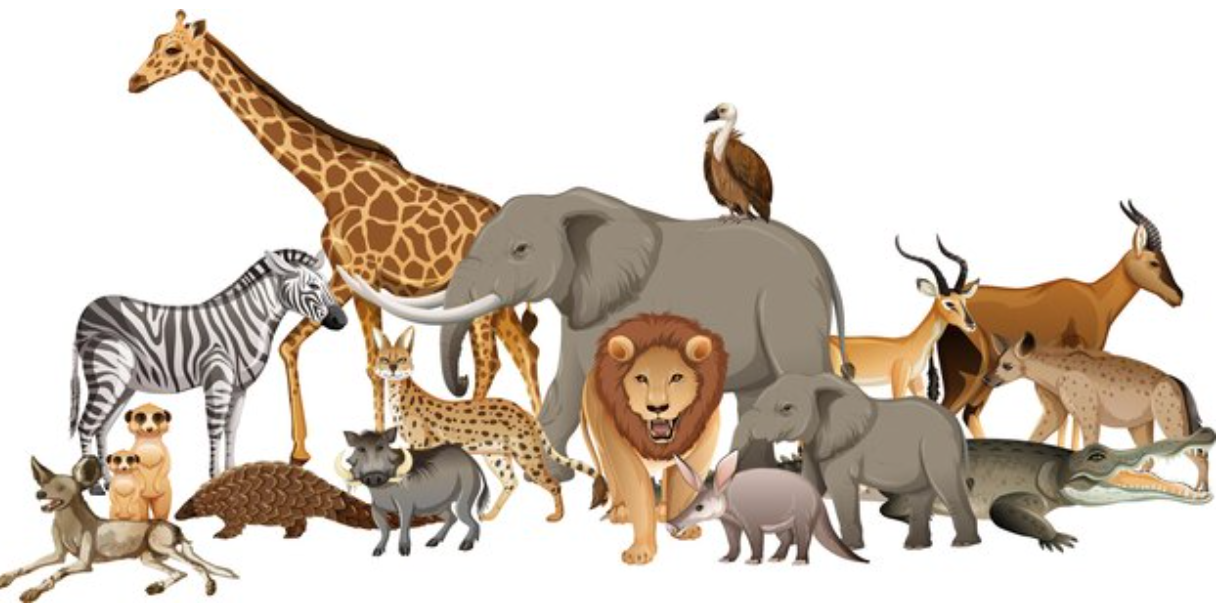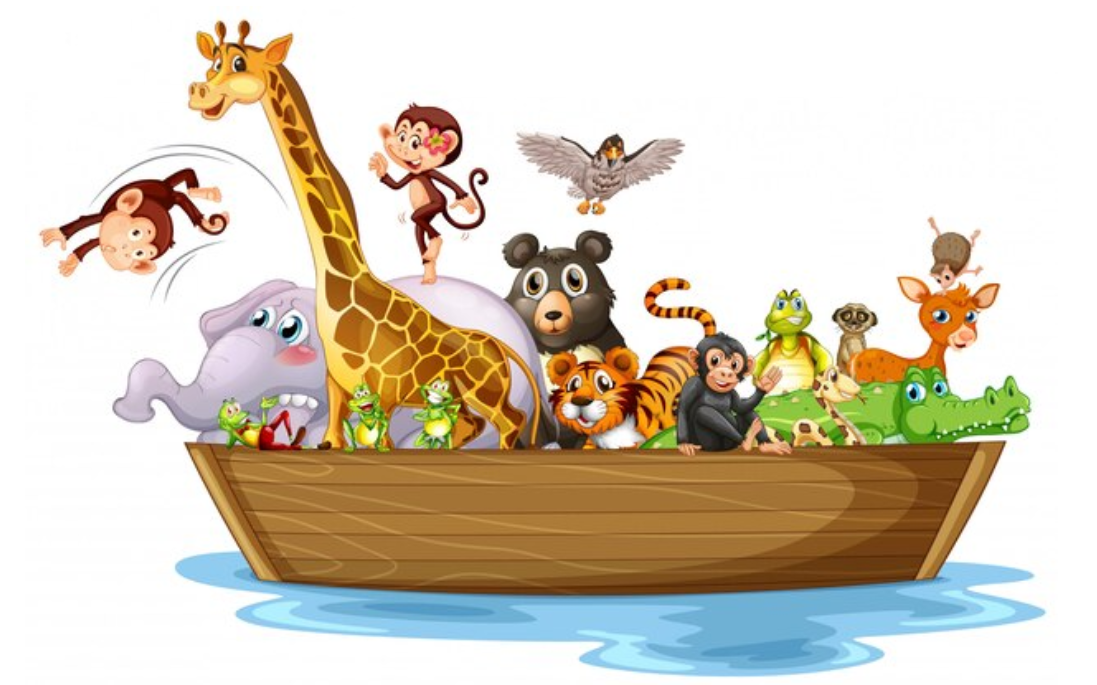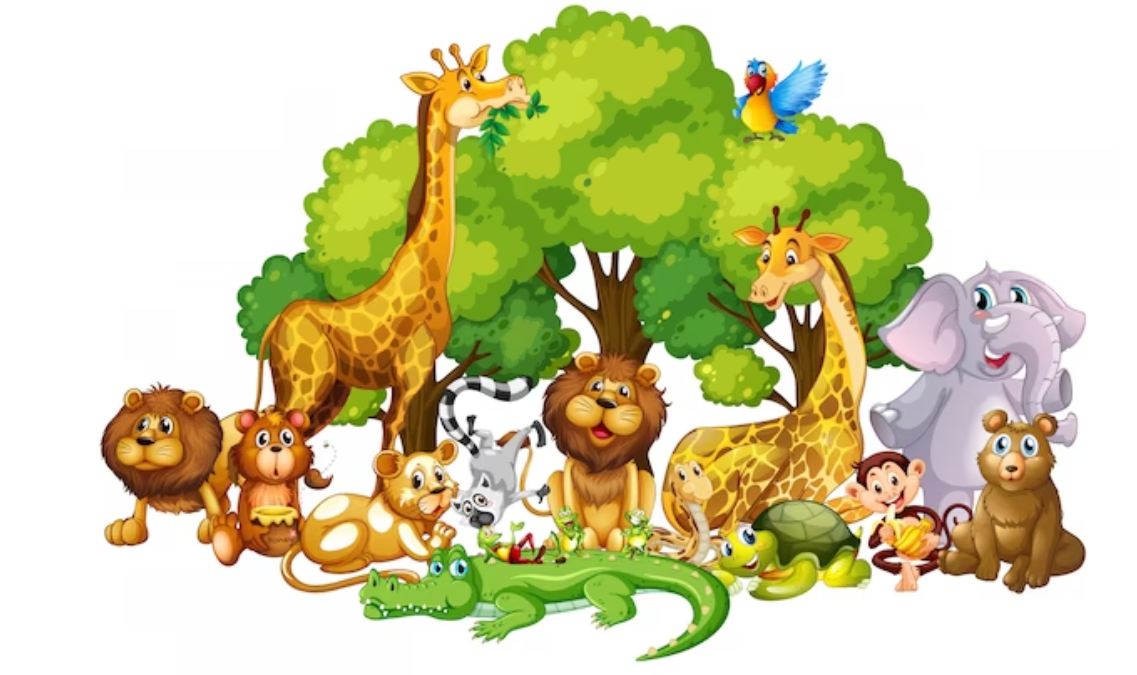Related Terms for Animals
There are many different terms and concepts used to describe different aspects of animals and their behavior in the animal kingdom. In order to clarify the meanings and implications of some frequently used terms related to animals, this article attempts to give an overview of them.
1. Habitat
The natural environment where an animal species lives and flourishes is referred to as its “habitat.” It includes the precise geographic location, temperature, and topography that offer the resources and environmental circumstances required for the species to thrive.
2. Adaptation
Animals gradually acclimate to their habitat through the process of adaptation. In order to better survive and reproduce in their environment, they undergo physical, behavioral, and physiological changes. Hibernation, migration, and camouflage are a few examples of adaptations.
3. Carnivores, Herbivores, and Omnivores
These nomenclatures classify animals according to the main food source they eat:
An animal classified as a carnivore is one that mostly eats meat.
An animal classified as an herbivore feeds mainly on plants.
An animal that eats both plants and meat is called an omnivore.
4. Hunters and gatherers
An animal that hunts and consumes other animals, also referred to as its prey, is referred to as a “predator” in the animal kingdom. Because predators aid in the management of prey species populations, this relationship is crucial to preserving the ecological balance of ecosystems.
5. Endangered Species
A species that is in danger of going extinct is classified as endangered. Pollution, poaching, climate change, and habitat loss are a few possible causes of this. Global efforts are being undertaken to preserve and safeguard threatened species in order to keep them from going extinct.
6. Biodiversity
The range of life forms present in a particular ecosystem, area, or planet is referred to as biodiversity. It includes genetic variation within species, species diversity, and ecosystem diversity. The resilience and stability of ecosystems depend on biodiversity, which is also essential for preserving the planet’s general health.
7. Migration
Animals move from one area to another during certain seasons in search of food, breeding grounds, or climate conditions that are more favorable. Numerous bird species are well-known for their annual migrations over thousands of kilometers.
8. Ecosystem
An ecosystem is a group of living things that interact with one another and their physical environment, such as plants, animals, and microorganisms. It deals with the movement of nutrients and energy within a given space. An ecosystem can be as small as a pond or as large as a forest.
9. Conservation
The protection, preservation, and sustainable use of natural resources, such as animals and their habitats, are referred to as conservation. It entails initiatives to stop the loss of biodiversity, encourage ethical behavior, and increase public understanding of the significance of protecting the environment for coming generations.
10. Extinction
A species becomes extinct when it goes extinct. It may occur organically over time or more quickly as a result of human activity. The delicate balance of ecosystems can be upset, and far-reaching ecological effects can result from the extinction of a species.
Complete list of animals related terms

Animal Family: Names of Males, Females, and Offspring
Similar to human families, there are males, females, and their darling offspring in the animal kingdom. Animals have distinct terms for males, females, and their offspring, even though they may not use the same naming conventions as humans do.
Let us begin with the men. The male of a species of animal is commonly called a “bull” or a “stag.” For instance, the male cattle in the bovine family are referred to as bulls. Likewise, the male member of the deer species is referred to as a stag. Now let’s talk about the females. They are usually referred to as “cows” or “hinds.”
Female Animals in the Family
For example, a female cattle in the deer family is called a hind, but a female in the bovine family is called a cow. Let’s now discuss the small ones. The names given to offspring animals vary based on the species.
Male Animals in the Family
For instance, young lions are referred to as “cubs,” baby deer are called “fawns,” and baby cattle are called “calves.” Although the names of these animals may differ among families, they are all meant to refer to the young. It’s crucial to remember that not every animal family gives its male, female, and young members unique names. They are sometimes referred to as adults and offspring.
Importance of Family Structure in the Animal Kingdom
Nonetheless, the aforementioned instances illustrate typical animal naming practices. In conclusion, animals have distinct terms to identify males, females, and their cute offspring, even though they may not have the same naming customs as people. We can better appreciate the diversity and beauty of the animal kingdom if we are aware of these names.
Complete list of animals family member names
Names of animal groups
Animals are amazing beings that frequently congregate in groups for a variety of purposes. Each species has its own unique name for these groupings. Here are some intriguing names for animal groups:
A group of dolphins:
Dolphins are known to form pods and are very gregarious animals. These pods may contain as few as a few dolphins or as many as hundreds. Together, they hunt, defend, and use a variety of vocalizations to communicate.
A Herd of Elephants:
Matriarch-led herds of elephants are recognized for their robust social ties. These herds may include multiple related females and their progeny. When they are fully grown, male elephants typically depart from the herd.
A Pride of Lions:
Lions are regal animals that reside in prides. A dominant male, several females, and their cubs usually make up a pride. To hunt, defend their area, and care for their young, they cooperate.
A Colony of Penguins:
These birds are renowned for their cuddly waddling and their resilience in the bitter cold. They congregate in colonies, which can contain anywhere from a few people to thousands. Penguins take turns incubating their eggs and huddle together to stay warm.
A Pack of Wolves:
Wolves are gregarious animals that inhabit groups. Alpha male and female, their young, and additional subordinate members make up a pack in most cases. To hunt, care for their young, and protect their area, they cooperate.
Complete list of animals group names
Names for Animal Homes
Animals are frequently given names that reflect their distinct personalities and ways of living when it comes to their homes. These names provide information about the habitats and lifestyles of the animals, as well as adding to their allure and fascination.
Let’s look at a few intriguing animal last names:
1. Den:
Mammals like foxes, wolves, and bears are known to have dens. They can rest, give birth, and raise their children there, as it acts as a shelter.
2. Burrow:
Animals such as rabbits, badgers, and meerkats excavate tunnels or holes in the ground. They offer defense against weather extremes and predators.
3. Nest: It’s common knowledge that birds construct elaborate nests out of twigs, leaves, and other materials. Eggs are laid in nests, and chicks are raised in them.
4. Hive:
Hives are structured colonies made of wax that are home to bees and some species of wasps. The entire bee community resides in hives, where each member has a specific role to perform.
5. Web:
In order to capture their prey, spiders weave elaborate silk webs. Depending on the species, webs come in different sizes and shapes.
6. Warren:
A rabbit warren is a vast network of interconnected burrows. In addition to acting as a breeding ground, it offers protection.
7. Set:
A set is a badger’s underground residence. It is made up of a system of chambers and tunnels where badgers dwell and rear their young.
8. Lodge:
Known for their dome-shaped constructions made of branches, mud, and rocks, beavers are noted for their lodge construction. Lodges offer refuge and defence against scavengers.
9. Lair:
The term “lair” refers to an area that is concealed and secluded where animals such as bears, tigers, and lions take refuge.
10. Reef:
The term “reef” refers to the vibrant underwater homes of innumerable marine species. They offer a wide variety of organisms food, shelter, and breeding grounds.
Our knowledge of the natural world and the amazing ways that animals adapt to their environments is deepened by learning these animal home names.
Complete list of animals living places

Questions about general knowledge about animals
Try your animal knowledge with these trivia questions. Discover the largest land mammal, the fastest land mammal, the animal with the longest lifespan, and the largest species of shark. You can also learn about the bird that mimics human speech.
Question 1: Which land animal is the largest?
The largest land animal is the African elephant.
Question 2: Which bird has a reputation for being able to mimic spoken English?
The parrot’s capacity to mimic human speech is well known.
Question 3: Which land animal is the fastest?
The fastest land animal is the cheetah, which can reach speeds of up to 70 mph.
Question 4: Which animal lives the longest?
In response, some giant tortoises live over 100 years, making them among the species with the longest lifespans.
Question 5: Which shark species is the largest?
The largest shark species, with a maximum length of 40 feet, is the whale shark.
Question 6: Which animal’s brain is the largest?
The sperm whale, which can weigh up to 20 pounds, has the largest brain of any animal.
Question 7: What bird is the national bird of the United States of America?
The national bird of the United States is the bald eagle.
Question 8: Which animal has a reputation for being able to blend in?
The chameleon is renowned for its capacity to alter its color and adapt to its environment.
Question 9: What is the world’s smallest mammal?
With a weight of less than a penny, the bumblebee bat is the tiniest mammal on the planet.
Question 10: Which animal is regarded as the wisdom symbol?
The owl is frequently considered to represent wisdom.
